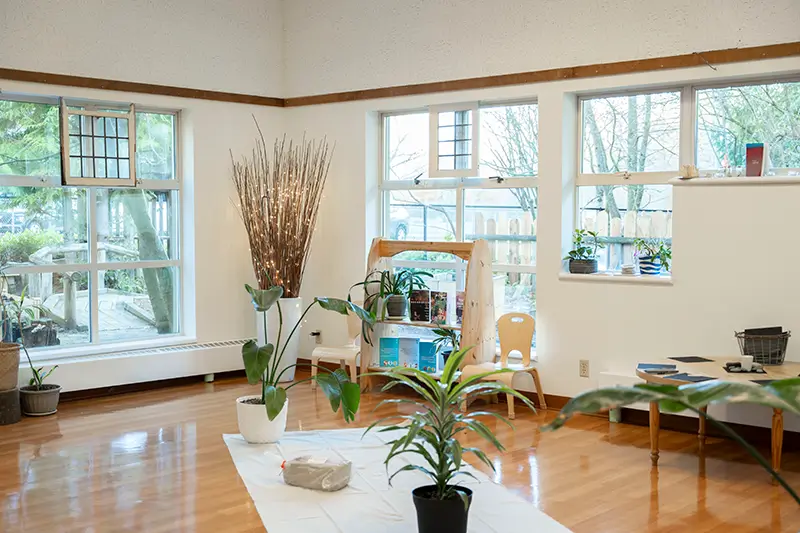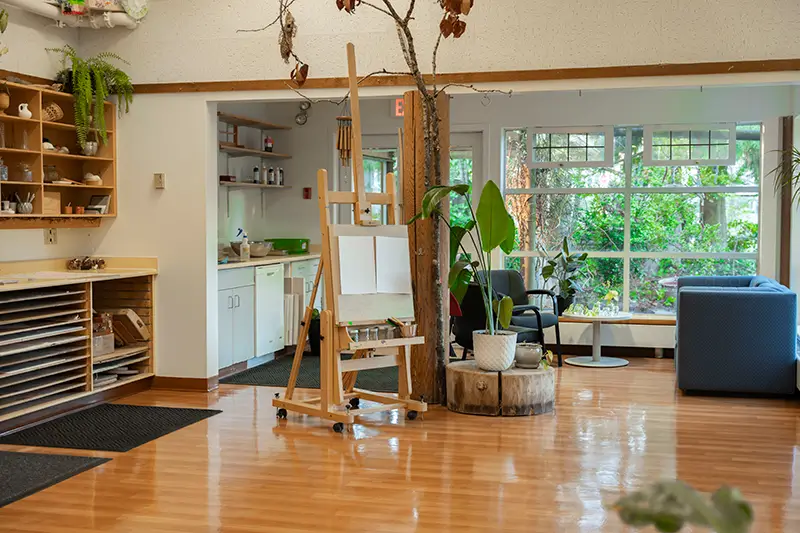Our pedagogy
Cultivating innovative and transformative pedagogies.
Pedagogy: a definition
Pedagogy is the art and science of teaching or the method and practice of teaching.
Our mission
At UBC Child Care, we cultivate innovative and transformative pedagogies to foster early childhood spaces that are rich in possibilities for children, educators and families.


Our vision
Pedagogy is at the heart of all that we do. We care for and educate children.
Our collective values and ethics guide our pedagogies, and we continuously reflect on our practices through open listening, collaboration and active engagement in dialogue.
As part of UBC—a global centre for teaching, learning and research—our pedagogies also engage with major social, cultural and political issues, including social justice, eco-justice, equity, diversity and inclusion and human rights and responsibilities. Through our work each day, we are agents of social change, and we challenge dominant discourses.
To accomplish our mission, we work with children, families, government, the Early Childhood Education sector, the university—including other university ancillary departments and academic faculties—our community and more.
Surrounded by Pacific Spirit forest and located within the academic community, UBC Child Care is on the unceded, ancestral homelands of the xʷməθkʷəy̓əm (Musqueam) people. The forest influences our pedagogy, the academic community offers unique learning opportunities, and the neighbourhood provides community. Acknowledging our location on the traditional xʷməθkʷəy̓əm ancestral homelands creates space and opportunities for education and awareness.
Collective values and ethics

Care and education

Social and
ecological justice

Respect

Democracy

Responsibility

Integrity

Creativity

Curiosity

Kindness
Pedagogical commitments
At UBC Child Care, through our teaching practices, we are committed to:
How we think about pedagogy
Our educators understand pedagogy as concerned with subject (i.e., the child) and world formation, and —influenced by Mark K. Smith—we conceptualize pedagogy as a process that begins to take shape with leading ideas and the questions those ideas bring about. Through relationships between children and educators, these leading ideas and questions generate dialogue and learning, which culminates with informed, committed actions.
Pedagogy in practice
Place as a leading idea
A good example of pedagogy in practice at UBC Child Care is when, for a few weeks, we collectively engaged in thinking about place as a leading idea.
With this leading idea in mind, many groups went out on walks to explore their surroundings. One group noticed litter in one of the areas they were exploring, which led to questions and concerns about litter, garbage and waste.
With the support of the educators, the children began to safely collect litter during their daily explorations—an effort to repair the places they visit—which then led to more questions and conversations about garbage, plastic, reusing and recycling. In particular, the children noticed how garbage accumulated, and they discovered some of the limits to reusing and recycling.
Then, over time and through discussion, some of the objects the children collected, such as candy wrappers and bottle caps, became regarded as beautiful, collectable objects. Through this process of noticing, discussing, thinking and acting, new ideas emerged, expanding the pedagogical process and the children’s sense of place.